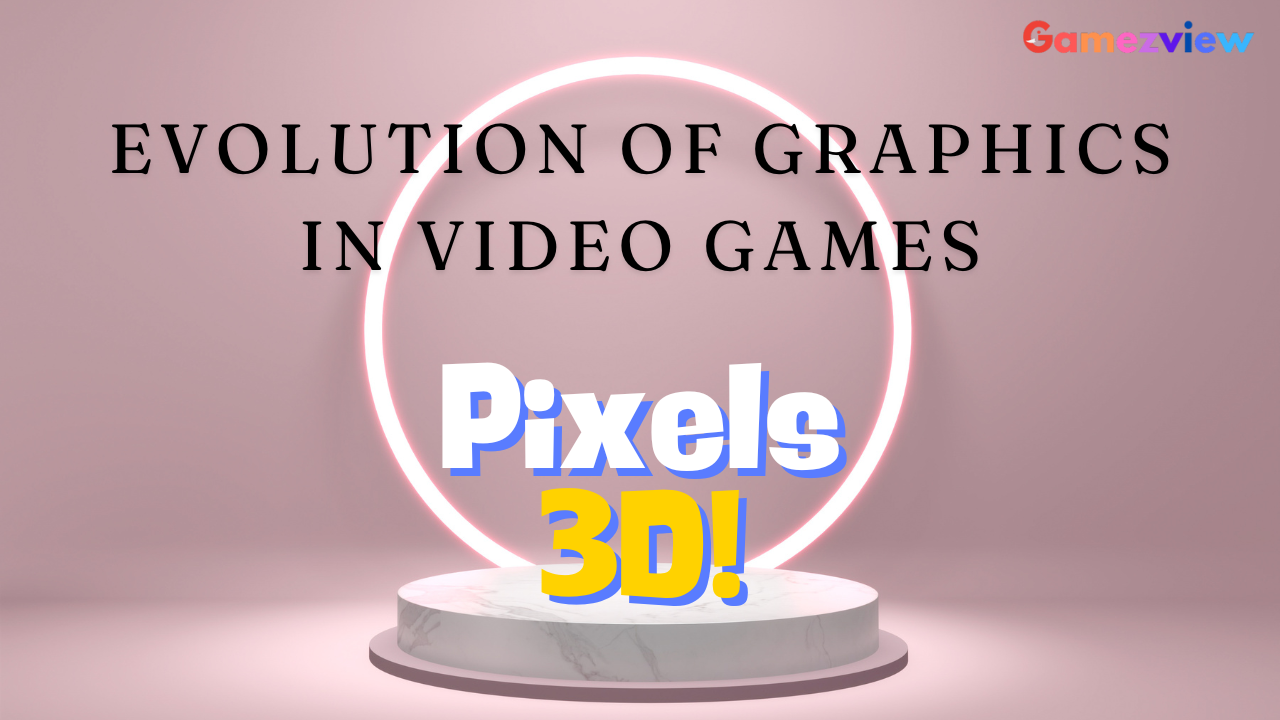The evolution of graphics in video games has been nothing short of remarkable. From simple pixelated sprites to photorealistic 3D environments, advancements in technology have transformed the way games look and feel, enhancing the immersive experience for players.
Graphics are a crucial aspect of video game design, as they contribute to the overall visual appeal and atmosphere of a game. Over the decades, game developers have continuously pushed the boundaries of graphical fidelity, striving to create more immersive and realistic worlds for players to explore.
The Era of Pixels
In the early days of gaming, graphics were limited by the hardware capabilities of the time. Games featured simple pixel art and 2D sprites, with limited color palettes and resolution. Despite these limitations, classic games like Pac-Man, Super Mario Bros., and Tetris captivated audiences with their addictive gameplay and charming visuals.
Transition to 3D Graphics
The introduction of 3D graphics marked a significant milestone in the evolution of gaming. With the advent of powerful hardware like the Sony PlayStation and Nintendo 64, developers began experimenting with 3D models and environments, ushering in a new era of immersive gaming experiences.
Rise of Polygonal Graphics
Polygonal graphics became the standard for 3D games, allowing developers to create more complex characters and environments. Games like Super Mario 64, The Legend of Zelda: Ocarina of Time, and Final Fantasy VII showcased the potential of 3D graphics, immersing players in expansive worlds filled with detail and depth.
Advancements in Rendering Technology
As hardware capabilities continued to improve, so too did rendering technology. Real-time lighting, shadow effects, and particle systems have become commonplace in modern games, enhancing the visual fidelity and realism of virtual worlds. Games like Half-Life 2, Halo 3, and The Elder Scrolls V: Skyrim pushed the boundaries of graphical fidelity, setting new standards for immersive gameplay experiences.
Photorealistic Graphics and Ray Tracing
Recent advancements in hardware and software have enabled developers to achieve photorealistic graphics in video games. Techniques like ray tracing simulate the behaviour of light in real time, resulting in stunning visuals with lifelike reflections, shadows, and textures. Games like Cyberpunk 2077, Red Dead Redemption 2, and The Last of Us Part II showcase the breathtaking beauty of modern game graphics.
The Future of Graphics
As technology continues to evolve, the future of graphics in video games looks incredibly promising. With the advent of next-generation consoles and advancements in virtual reality and augmented reality, developers have more tools than ever to create immersive and engaging experiences for players. Whether exploring vast open worlds, battling epic bosses, or solving intricate puzzles, the evolution of graphics continues to push the boundaries of what is possible in gaming.
From humble beginnings with simple pixels to photorealistic 3D environments, the evolution of graphics in video games has been a journey of innovation and creativity. With each technological advancement, developers have unlocked new possibilities for storytelling, immersion, and player engagement. As we look to the future, the sky’s the limit for the next generation of game graphics, promising even more breathtaking experiences for players around the world.
FAQs

What are pixels in video games?
- Pixels are the smallest unit of display on a screen, representing individual points of colour in a digital image. In early video games, graphics were composed of simple pixel art.
What is 3D graphics?
- 3D graphics are three-dimensional representations of objects and environments in a virtual space. Unlike 2D graphics, which are flat and two-dimensional, 3D graphics have depth and perspective, allowing for more realistic and immersive visuals.
What is ray tracing?
- Ray tracing is a rendering technique used in computer graphics to simulate the way light interacts with objects in a virtual environment. By tracing the path of individual rays of light as they intersect with objects in a scene, ray tracing creates highly realistic lighting effects, including reflections, refractions, and shadows.
How have advancements in graphics technology impacted gaming?
- Advancements in graphics technology have significantly enhanced the visual fidelity and realism of video games, allowing developers to create more immersive and engaging experiences for players.
What can we expect from the future of game graphics?
- The future of game graphics holds the promise of even more realistic and immersive experiences, with advancements in hardware and software enabling developers to push the boundaries of visual fidelity and realism.





